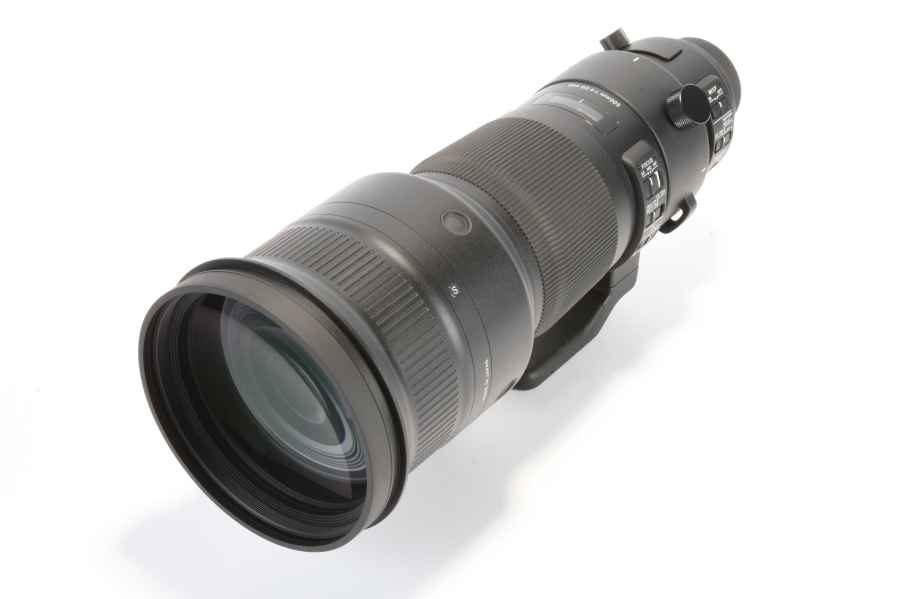As I join the A1065, pass the RAF base at Lakenheath and drive deep into Norfolk towards Holt, I listen carefully to the local radio for the next day’s weather report. Dry and bright but cold is the forecast. It seems that my luck of dodging the recent dull skies and squally showers might just be in. My anxiety about tomorrow’s assignment, which involves putting the Sigma 500mm f/4 DG OS HSM Sport to the test, is put at rest a little, but I must admit I’m still apprehensive about the subject I’m down to shoot.
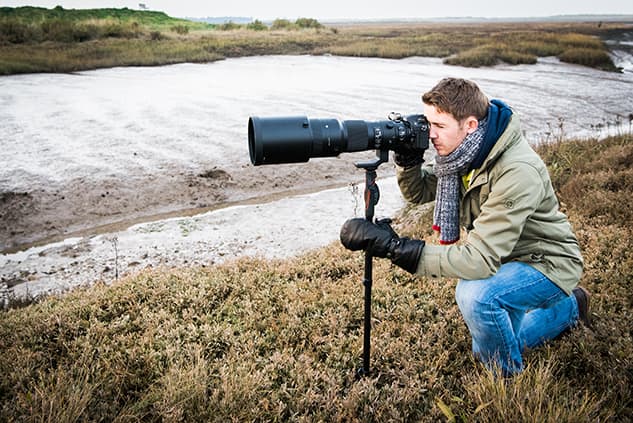
AP’s Michael Topham used the lens with Vanguard’s VEO AM-264TR monopod for extra support
It’s at this point I should perhaps let you in on a secret. Despite having an interest in nature and attempting wildlife photography a few times before, I always feel uneasy tackling the subject. It’s a hard one to describe, but when I have attempted to photograph wildlife in the past, it always feels like I walk away with average results that never seem to do the subject or my photographic ability any justice. I put a lot of this down to my lack of expert knowledge and knowing the best locations to get into the right place at the right time.
After arriving and settling in to my bed and breakfast for the night, I drop professional wildlife photographer David Tipling a message to tell him I’m all set for our pre-arranged jaunt around the coast the next day. By shadowing an expert like David, I’m optimistic that it will present opportunities to give the lens a real workout in the type of environment it will see regular use with working professionals. And who knows? A day of one-to-one tuition using a pro-spec lens might be just what I need to boost my self-confidence and change my perception of photographing such a challenging genre.
A bright and early start
The next day, I arrive at our meeting point and start by pulling my Nikon-fit sample of the lens out of its gigantic protective carry case before coupling it to my D810. I rest the body and lens on a jacket in the rear footwell of David’s Land Rover so I have quick access to it should we be successful in our morning hunt for barn owls. The thick overnight frost combined with clear, blue skies and rising sun has presented conditions that are as good as they get for wildlife photography, but after an hour of searching, the only wildlife we come across is a lone pheasant. Maybe today isn’t going to be my day, after all.
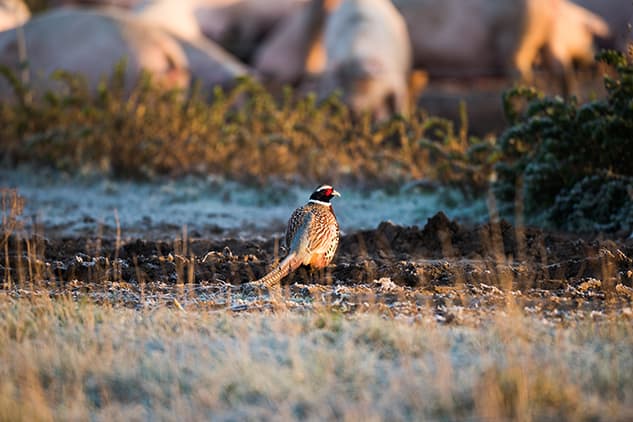
The first shot of the day was of a lone pheasant. Things got progressively better as the day went on
Despite not being the most endearing of subjects, a few shots of the pheasant make me realise the lens isn’t getting me close enough. Why didn’t I pack a 1.4x or 2x teleconverter as part of my kit, I ask myself. It’s at this point, I consider switching the D810 over to its DX-crop mode before mulling over the advantages of substituting it with the Nikon D500 that I packed in my bag at the last minute. With the D500 I’d be able to shoot 4fps faster than with the D810 and at higher resolution, while still getting the benefit of the 1.5x crop factor that effectively turns the lens into a 750mm equivalent.
Relocating to Cley next the Sea presents the first opportunity to use the lens in anger. As a colony of black-headed gulls approach in the distance, I loosen the knurled collar screw and rotate the collar by 180° to make it easier to haul up a bank to a better vantage point. It dawns on me that I’m carrying over £7,000 worth of kit by the built-in rotating tripod collar alone, but the rubberised grip on the underside of the long collar handle does an excellent job of ensuring that it doesn’t slip from my grasp.
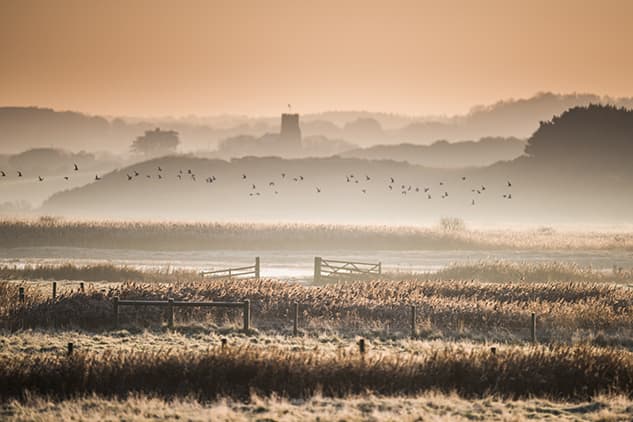
An early morning start presented the opportunity to capture this shot of a colony of black-headed gulls silhouetted against the mist. Salthouse church can be seen in the distance
With no time to familiarise myself with the buttons or switches, let alone support it on my monopod, I resort to firing a few handheld shots before the gulls vanish. Protruding more than 400mm beyond the D500’s lens mount and weighing over 3kg with the carbon-fibre hood attached, I take to crouching on my haunches and rest my elbow on my knee while cupping the barrel in my left palm to offer some additional support. It’s not a lens you’d typically associate with using handheld, but on the spur of the moment it’s not unfeasible.
Over the years, I’ve tested some colossal telephoto lenses and this example doesn’t feel as heavy as you might expect for a pro-spec 500mm f/4 optic. A lot of this is down to the fact that the barrel is mostly made from a lightweight yet tough magnesium alloy. Early results look promising on my camera’s screen, but again I have to magnify a long way in playback mode to create a tight crop on my subjects. A few minutes later, David suggests a visit to his hide that is set up in a few acres of local woodland, where he tells me his success rate of shooting birds up close is usually much higher. Naturally, I take him up on his offer.
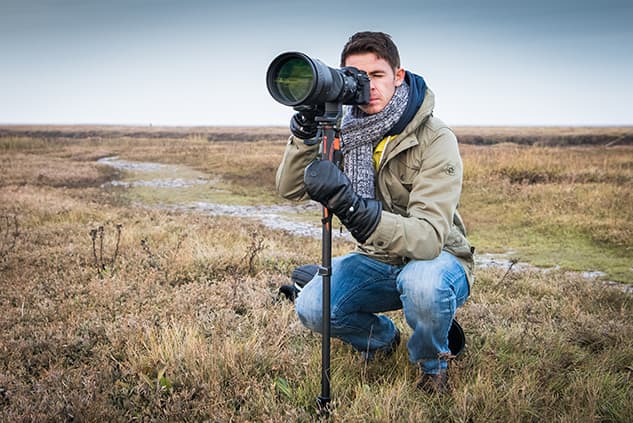
It is possible to use the lens handheld, but 90% of the time it was supported on a monopod
During our drive to the hide, we find ourselves discussing the extortionate prices of pro-spec telephoto prime lenses and I explain how the Sigma 500mm f/4 DG OS HSM Sport I’m testing is around £3,400 less than both Nikon’s 500mm f/4E FL ED VR and Canon’s EF 500mm f/4L IS II USM equivalents. We both come to the conclusion that the £4,999 you’d pay for the Sigma is a vast amount, but in relative terms it seems like you’re getting more for your money – provided it lives up to expectations and delivers similar results and a comparable performance to its more expensive rivals, of course. David went on to make the valid comment that the price of the Sigma could be the difference between a professional like himself buying and owning a 500mm f/4 from new and having to source a second-hand alternative, when you’re never too sure about the history of it and whether it’s as good as the seller makes out.
A patient wait
Within moments of stepping into the hide I can tell that it’s a better environment for observing wildlife from much closer range. As David scatters bird feed on a nearby perch, I set up, screwing my monopod into the tripod bush on the lens collar before adjusting the height to match the pane of one-way glass that will keep me invisible to the wildlife just a few feet away. Opting to work without the hood allows me to push the lens right up against the glass. The way the front element is slightly set back behind a thick rubber ring also prevents any glass-on-glass contact.
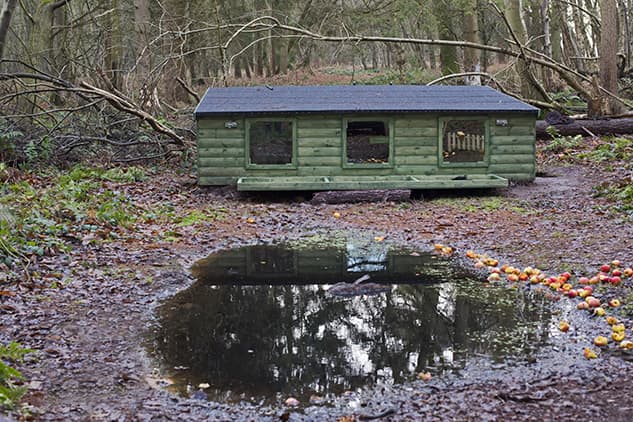
David Tipling’s wildlife hide features stopsol one-way glass. It’s located in North Norfolk
To ensure I work as discreetly as possible, I check that all audible aids such as the AF beep are switched off, and take the precautionary step of turning the 90° click stops off using the new tripod collar switch that guarantees silence when shooting between landscape and portrait orientations. After a patient wait we’re rewarded with blue tits and a robin feeding on the perch.
With the D500 set to its continuous high (CH) shooting mode, I find myself using the lens at its maximum aperture of f/4 at ISO 1600 to acquire a fast enough shutter speed in the dark woodland conditions. I begin by using single-point AF-area mode (AF-S) with the back-button focusing method to quickly acquire focus and keep it locked – something that can also be achieved on the lens itself by depressing and holding one of the four focus function buttons that encircle the front of the lens. The split-second acquisition of focus in moderate low light is extremely impressive, although the ‘silent’ shooting conditions highlight a subtle whir that can be made out when the lens is asked to perform focusing duties across a long focus distance.
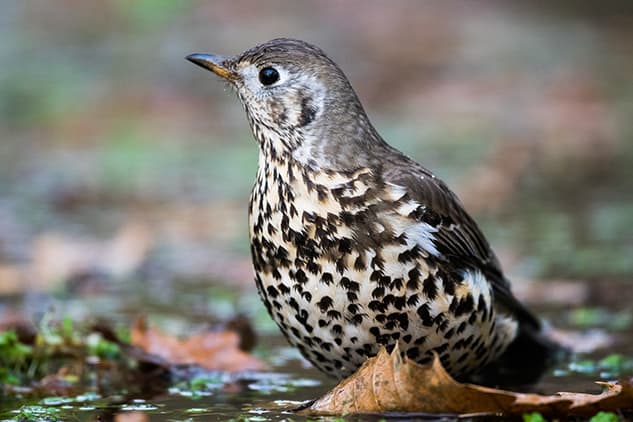
A mistle thrush bathes in a pool of water close to the hide. This is another example of an image captured at f/4
With many species of bird opting to drink from a small pool of water close to the hide and others feeding in the distance, I take my chance to try out the focus-recall function of the lens. Ensuring the beep on/off switch is disabled and the focus mode switch is set to its central memory recall setting, I use the D500’s AF-ON button to obtain focus on the tip of the perch before using the memory-set button to store the focus distance.
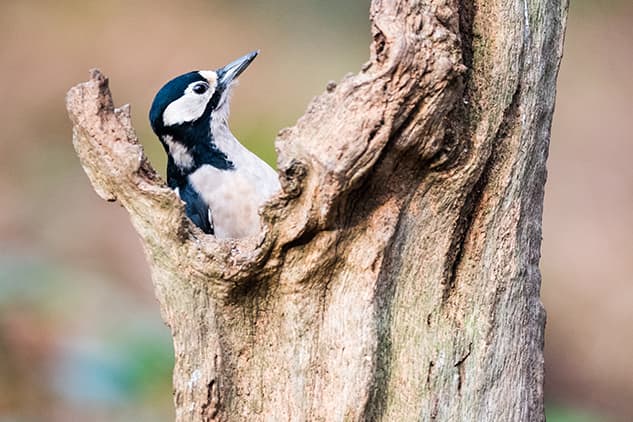
The memory recall function played a role in capturing this shot of a great spotted woodpecker. It’s saves your focus distance and you have the option to recall it at any time from a touch of a button
A few minutes later, just as I’m capturing a few shots of a mistle thrush drinking within a stone’s throw of the hide, David makes me aware of a woodpecker right where I’d stored the focus distance just a few moments ago. With my left hand resting on the front of the lens, I use one of the focus buttons of the lens to reacquire the same focus distance I had used in my previous perch shots and rattle out several bursts. The focus-recall function has its uses when you’d like the lens to revert to the focus position of your choice in an instant, and as I found out in practice it can make the difference between bagging an impromptu shot and missing it altogether.
On closer inspection
Several hundred shots later, David suggests moving from the hide to a new location close to Brancaster to take advantage of the late afternoon light. This presents the opportunity to photograph a variety of other species in their natural habitat, including a little egret, redshank and cormorant. An hour or so later the best of the light disappears and we make the mutual decision to retreat back to David’s house to review our shots over a warming brew. It’s never the same inspecting images on a camera’s screen as it is on the computer, but I can already sense the image quality of the lens isn’t going to disappoint. It’s amazing what a few complimentary comments and tips from a professional wildlife photographer like David Tipling do for your confidence, and as I begin the long journey home on a high, I have no regrets choosing the lens I did for my wildlife assignment.
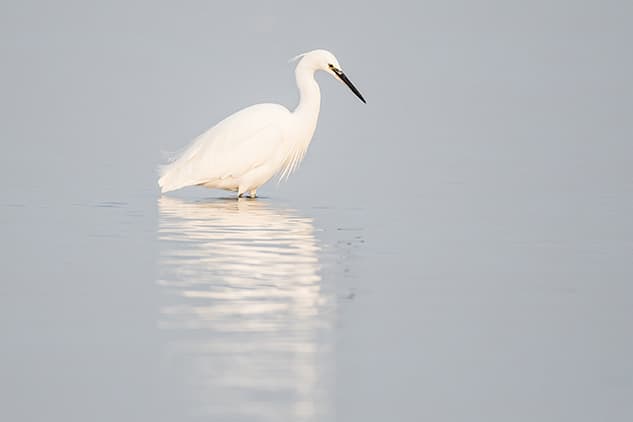
This little egret was photographed close to Brancaster – a popular spot for birdwatching
The next morning, I’m eager to inspect my images to find out if my extremely enjoyable real-world experience of using the lens in the field can be backed up an equally impressive performance in terms of image quality. After downloading all my images, I begin by examining my first series of shots, which were taken using the Nikon D810. Although I discover that vignetting is evident in full-frame files between f/4 and f/5.6, it’s ruled out by using it on APS-C. Crucially, the lens delivers tack-sharp results when used wide open, where it’s likely to see most use from wildlife and sports professionals, and distortion, as to be expected, is virtually non-existent. Other than the fact it does vignette on full frame, there’s very little to fault with regard to its optical performance.
Sigma 500mm f/4 DG OS HSM Sport Field Test – Verdict
It’s easy to look at the price of expensive lenses such as the Sigma 500mm f/4 DG OS HSM Sport and immediately disregard them from your radar. While the price implies working pros specialising in sports and wildlife are the only ones ever likely to purchase such a lens, it’s possible to get it in your hands for a one-off shoot, or a special event you’re planning, for a fraction of the price you’d pay outright. Some lens-hire companies such as Hireacamera are already starting to stock it in Canon and Nikon mounts, and for a nominal fee of £80 you’ll have unlimited use of it for a day. When you start to compare this to the £115-£120 you’d spend to hire a Canon or Nikon equivalent, you realise there’s good money to be saved.
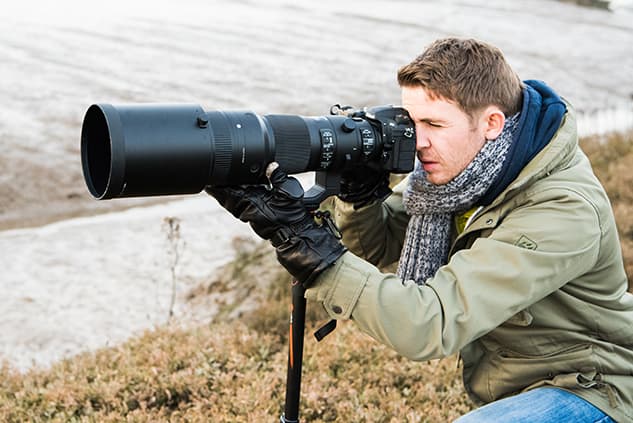
The lens hood is made of carbon fibre, which is both lightweight and strong. The entire lens is designed to be lightweight for outstanding performance in tough shooting conditions
Given the opportunity to get back out and shadow a working wildlife photographer like David Tipling again, I wouldn’t spare a second thought to splash out and hire the Sigma 500mm f/4 DG OS HSM | Sport. The crisp results you can get from it make it worth every penny of the hire fee.

